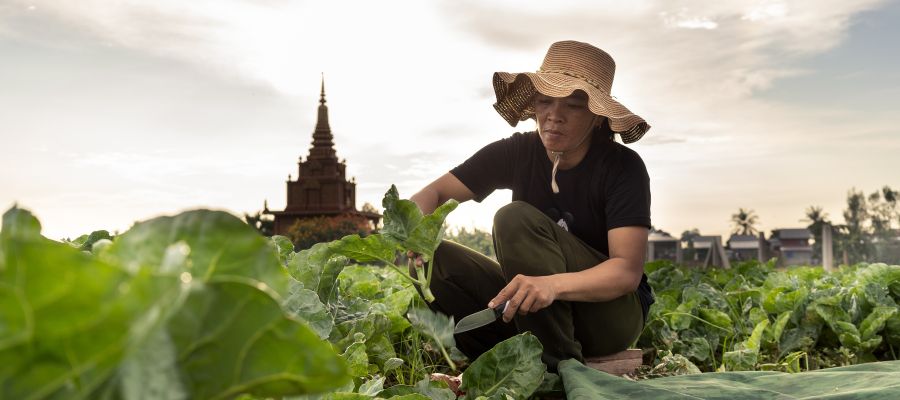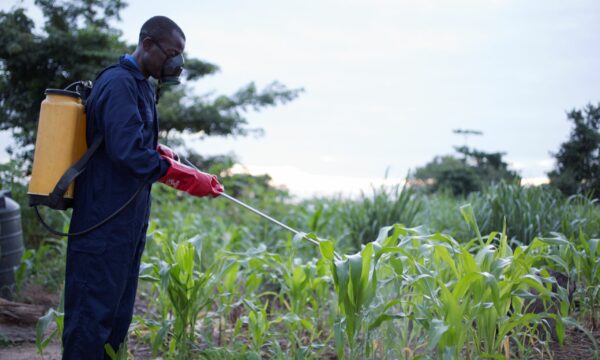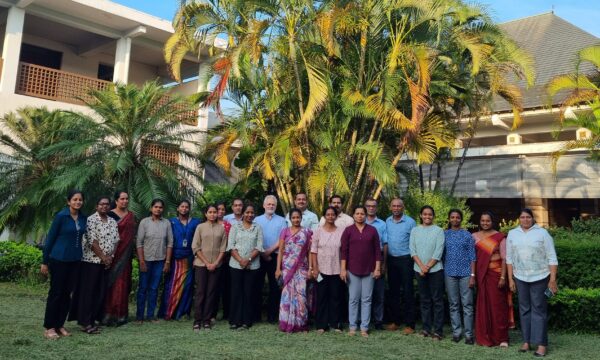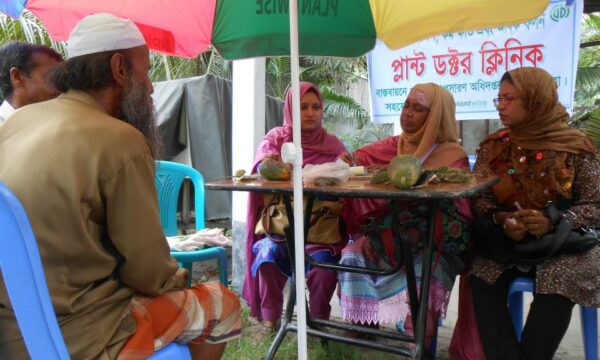The Crop Sprayer mobile app is the latest tool in the PlantwisePlus Toolkit. The free app helps users apply just the right amount of pesticide to treat and protect crops from pests.

Growth in pesticide use
Farmers lose up to 40% of their crops to pests and diseases. The increase in devastating species, such as the fall armyworm, papaya mealybug and tomato pinworm, has led to a growth in pesticide use among smallholder farmers. However, the misuse and overuse of chemicals can harm human health and the environment.
One solution for reducing pesticide risks is to follow an Integrated Pest Management (IPM) strategy. IPM is a holistic and sustainable approach to pest control. It combines physical, cultural and chemical practices to economically control crop pests whilst minimising hazards. As such, IPM strategies aim to reduce the use of pesticides.
Careful use of pesticides

IPM includes the use of pesticides, but only after monitoring indicates action thresholds have been exceeded. Applying the correct pesticide at the recommended dose is very important to minimise risks to human health, beneficial and nontarget organisms, and the environment.
This is when the Crop Sprayer app can be of benefit. Through the app, users can quickly work out simple calculations, including how much pesticide to put in their sprayer, how much pesticide they need in total, and how many tanks they require for an area.
When is it appropriate to incorporate pesticides into an IPM strategy, and how can the Crop Sprayer app help?
Identification and monitoring of pests
The first step in IPM is to identify and monitor the pest. Understanding the pest species, its behaviour, and its life cycle can help determine whether non-chemical methods alone are sufficient or if pesticide intervention is required.
View the PestSmart Diagnostic Field Guide
Threshold levels of pests
Threshold levels are predetermined pest population levels at which a farmer should take action to prevent economic or environmental damage. Utilising thresholds helps prevent unnecessary pesticide applications and ensures that treatments are targeted and effective.
Selective pesticides
When pesticides are deemed necessary, farmers should choose products that target the specific pest. Selective pesticides, also known as soft pesticides, reduce the risk of disrupting natural predator-prey relationships.
Pesticide resistance management
Pesticide resistance is a significant concern in pest management. Overreliance on a single pesticide can lead, over time, to resistance in pest populations, rendering the pesticide ineffective.
Using pesticides strategically and sparingly can help slow down pesticide resistance. Farmers can do this by rotating between chemical modes of action and employing other non-chemical control methods, such as biocontrols.
Cost-Benefit Analysis of pest problem
Assessing the potential economic losses from the pest problem compared to the costs associated with pesticide application allows farmers to understand if the economic benefits of pesticides outweigh the costs. Cost considerations include the product, application equipment and labour.
Using the Crop Sprayer app

If a farmer decides it is appropriate to use pesticides as part of their IPM strategy, then the Crop Sprayer app can help with the often tricky calculations. The app supports farmers and agricultural advisors, ensuring they can calibrate the output of their sprayers and purchase and use the right amount of pesticide. Not only does this help tackle issues around misuse and overuse, but it also means farmers do not have unused pesticides left over. Leftover chemicals cost the farmer money unnecessarily, as well as pose challenges with pesticide disposal.
About the Crop Sprayer app
The Crop Sprayer App is free for everyone to download and use and is available in English, French, Spanish, Swahili and Bengali.
Users require an Android smartphone or tablet with enough storage space for the app and access to the internet to download the app from the Google Play Store.
Once downloaded, the app works offline. However, a stable internet connection and sufficient storage space on your device are needed for any updates released by CABI.
CABI Bioprotection Portal
The CABI BioProtection Portal can be used alongside the Crop Sprayer App as it provides up-to-date information to identify, source and apply registered microbial biopesticide products in a given country, thereby supporting the rational application of nature-based pest management solutions.
Related News & Blogs
How do pest risk registers address the spread of plant pests in Africa?
Pest risk registers can help to solve problems in agriculture, addressing the growing global threat of plant pests. Moreover, changing weather patterns, led by rising temperatures, are causing them to reproduce faster and expand into new regions. In ad…
10 July 2025




